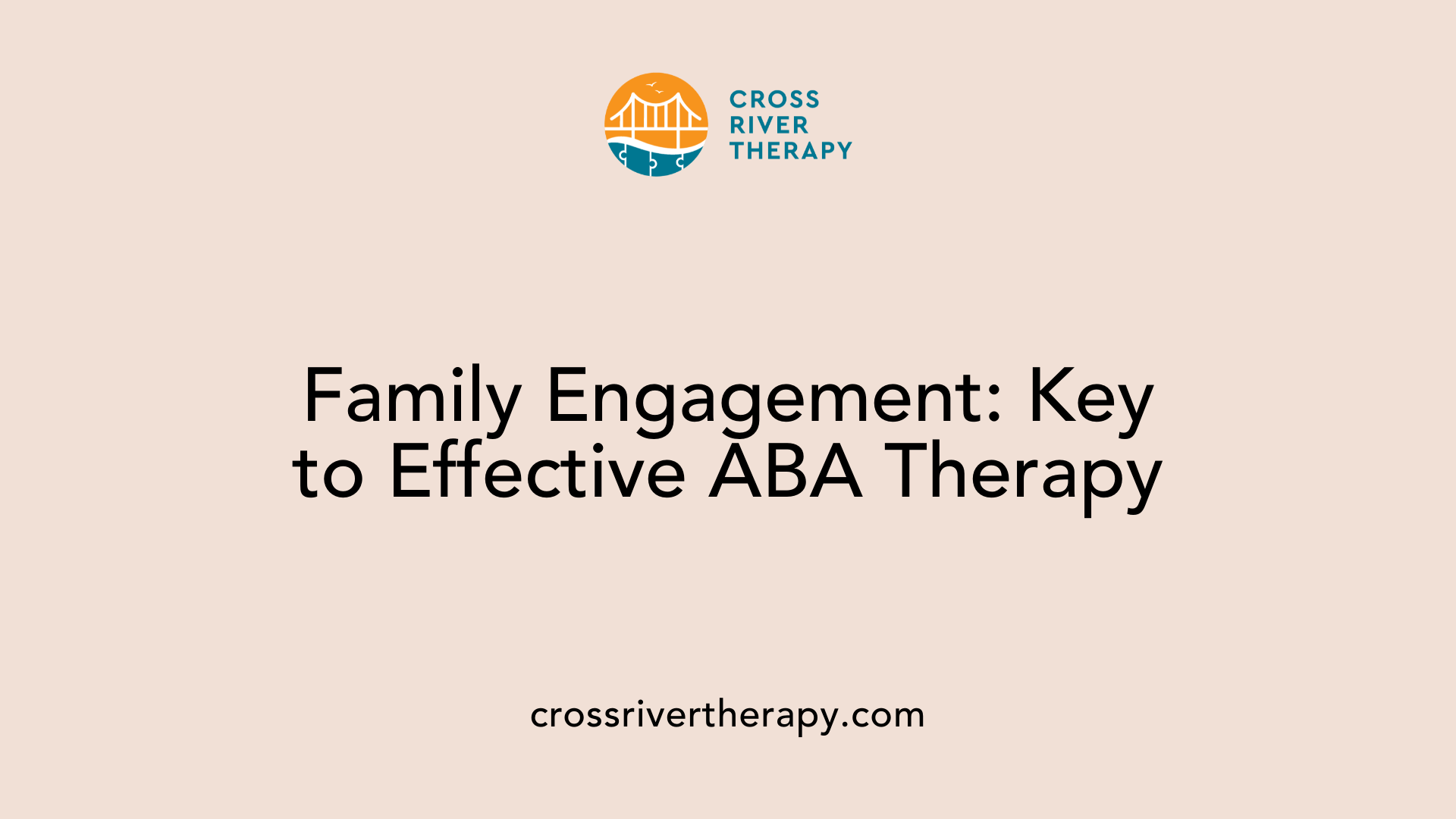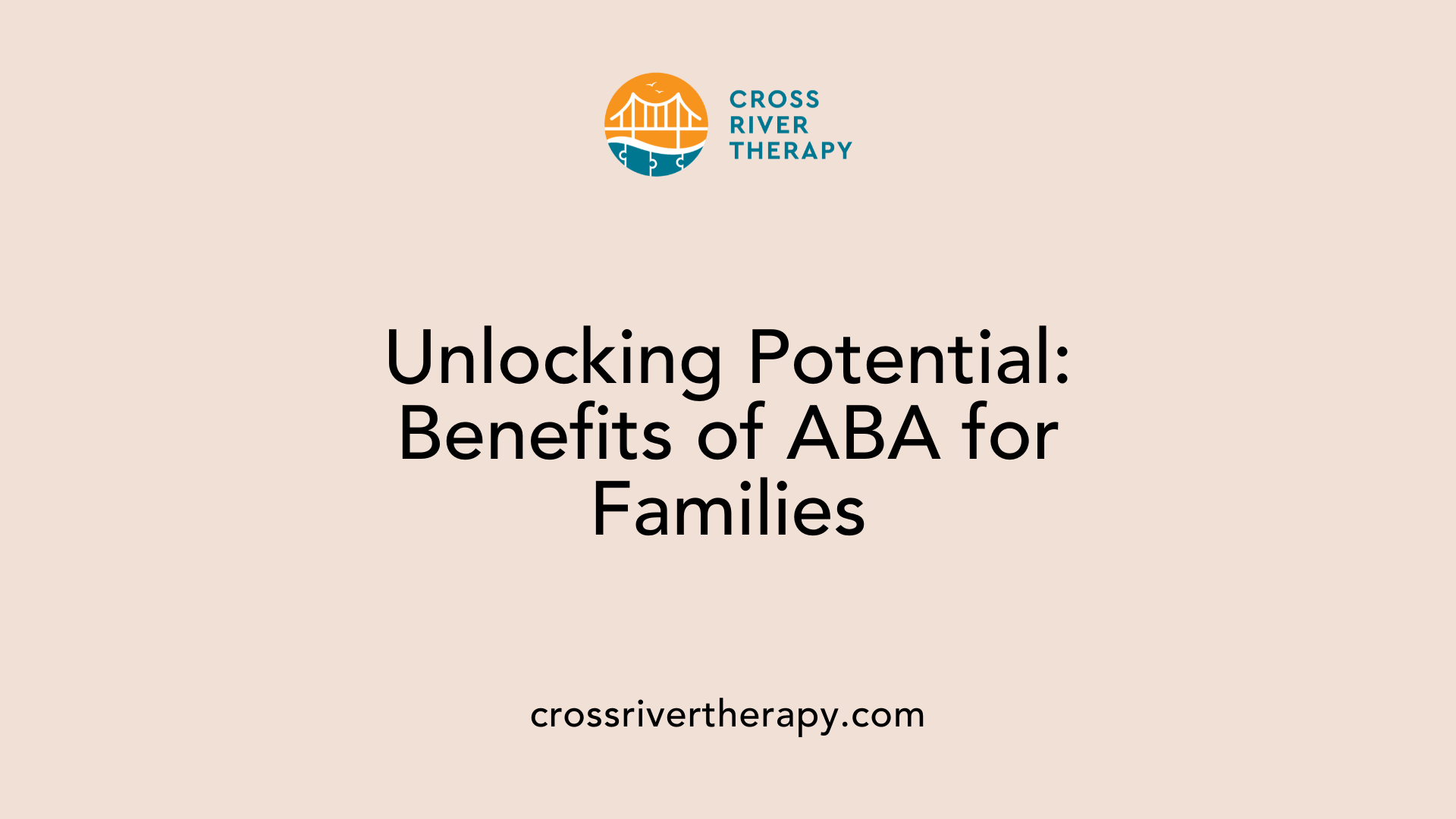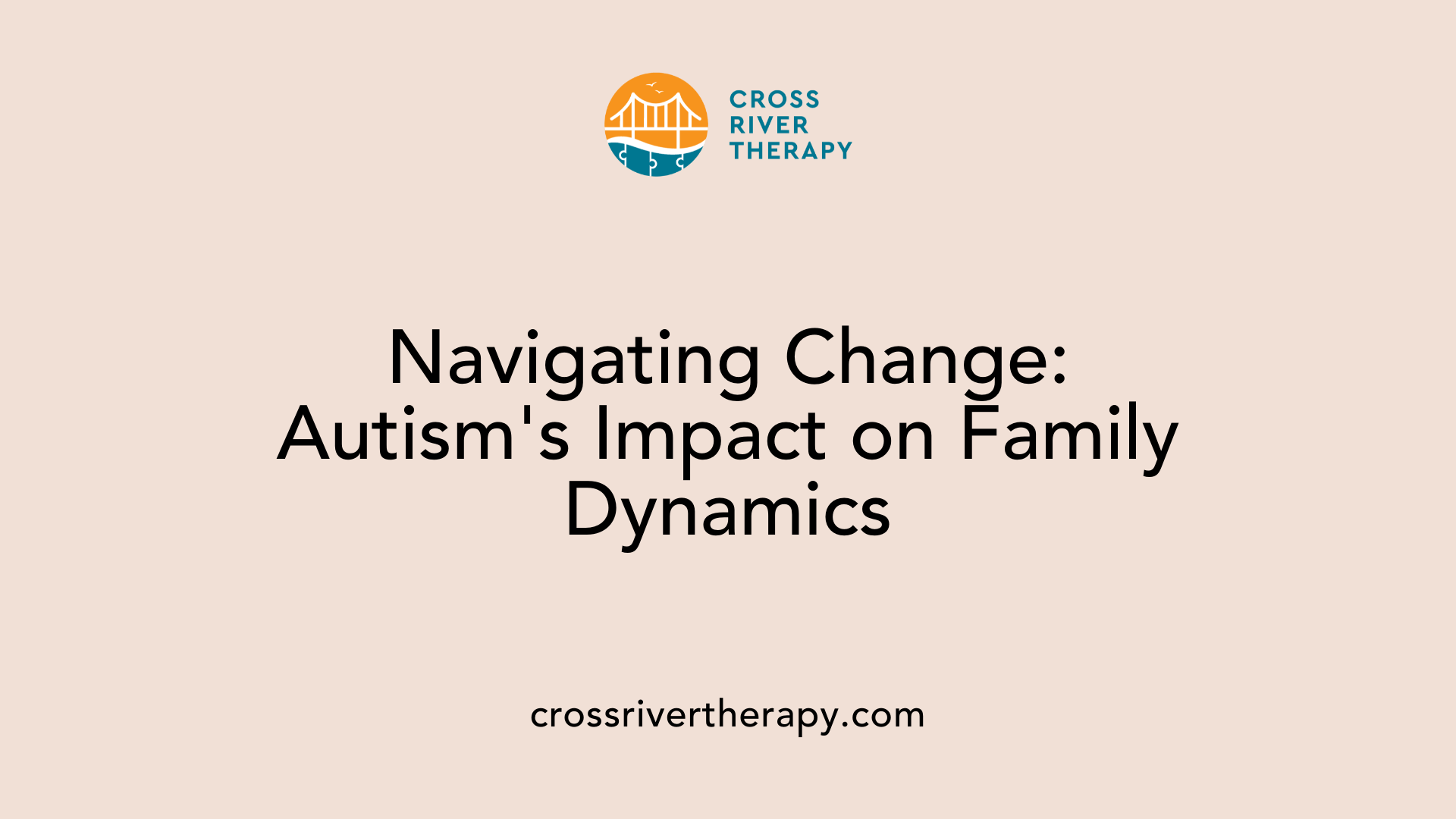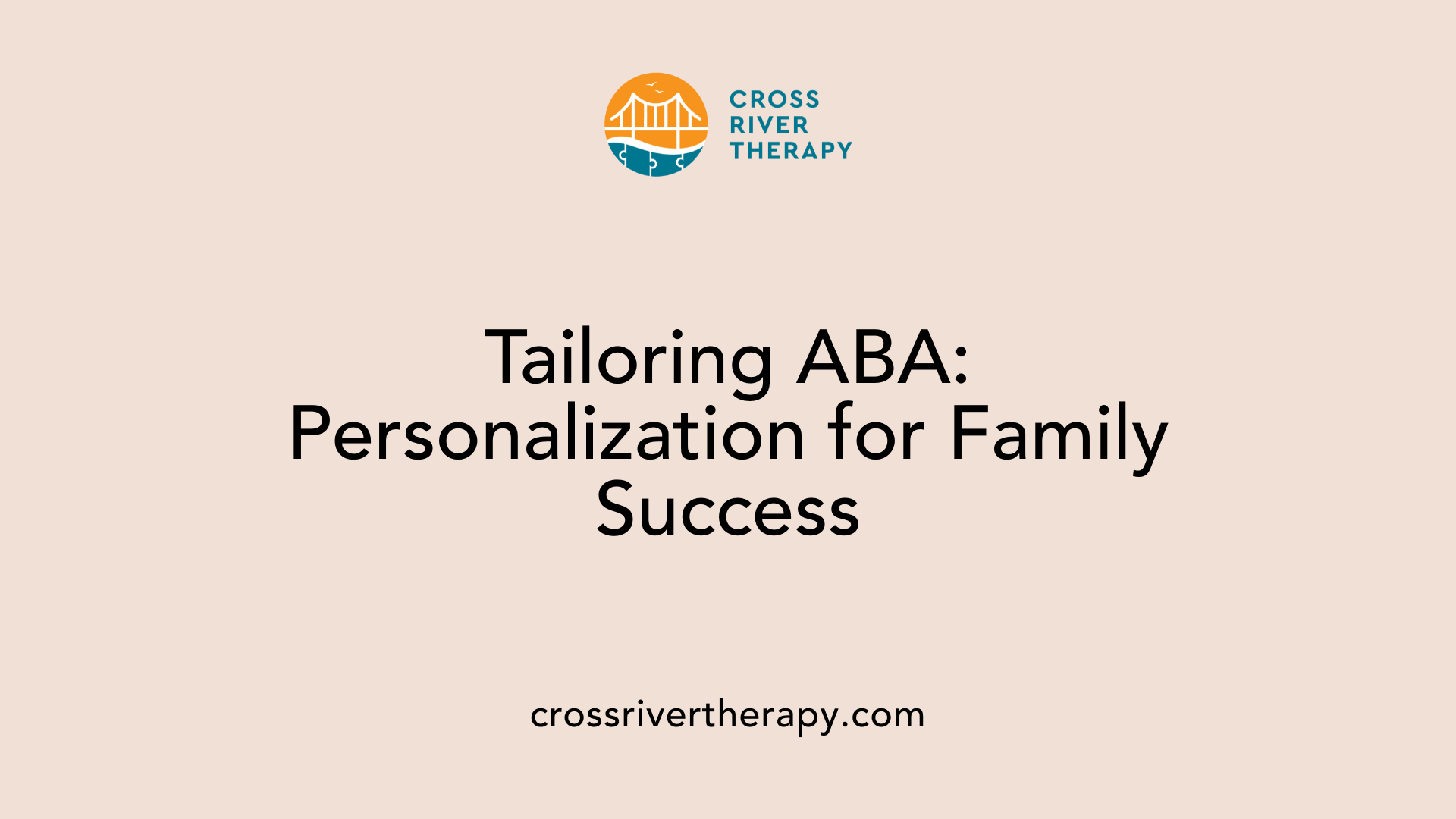The Impact of ABA Therapy on Families
Unpacking ABA Therapy: Enhancing Family Dynamics and Child Development
Introduction
Autism Spectrum Disorder (ASD) affects countless families worldwide, often presenting unique challenges and altering family dynamics. Among the various interventions available, Applied Behavior Analysis (ABA) therapy stands out for its evidence-based approach to addressing the developmental needs of children with autism. Recognized by major health organizations and supported by extensive research, ABA therapy not only aids children in acquiring crucial life skills but also transforms the lives of families by enhancing communication, reducing stress, and fostering stronger relationships. This article delves into how ABA therapy impacts families, outlining both its benefits and the challenges they may face along the way.
The Role of Family Involvement in ABA Therapy

What role does family involvement play in the effectiveness of ABA therapy?
Family involvement plays a crucial role in the effectiveness of ABA therapy by fostering consistency and generalization of skills learned during therapy sessions into everyday life. This collaboration allows families to implement parent training programs, equipping them with vital ABA techniques to reinforce strategies at home. Research indicates that families who actively participate in their child's ABA therapy experience significantly better outcomes. This involvement helps in reducing behavioral challenges while enhancing overall family dynamics.
The importance of open communication with therapists cannot be overstated; it is essential for tailoring interventions to meet the child's unique needs and tracking their progress. Parents and caregivers are encouraged to create structured environments at home that support learning, including predictable routines and reinforcement for positive behaviors. In this context, the home becomes a place where newly acquired skills can be practiced and solidified.
Importance of consistency
Overall, ongoing family commitment and collaboration with professionals ensure a supportive network that maximizes the child’s potential for growth and independence. With family members actively engaged, the lessons from therapy sessions extend beyond clinical settings, cementing those learnings into daily life. Such commitment not only benefits the children but reinforces familial bonds, showcasing that the journey towards independence is indeed a collective effort.
Benefits of ABA Therapy for Families

How does ABA therapy help families of children with autism?
ABA therapy provides critical support not just to children with autism but also to their families. This holistic approach promotes family involvement as an essential factor for the therapy's success, ensuring that behavioral strategies and skills learned during sessions are consistently applied at home. By engaging parents and siblings, ABA therapy not only equips families with the tools they need to reinforce positive behaviors but also fosters a cooperative and understanding environment for the child.
Key Benefits for Families:
Enhanced Communication: Regular dialogue between families and therapists creates a cohesive strategy tailored to the child's unique needs, enhancing both understanding and effective intervention.
Behavior Management Strategies: Parents receive training that empowers them to handle challenging behaviors and implement effective strategies for everyday interactions, leading to a significant reduction in stress and frustration.
Improved Family Relationships: Involving siblings and encouraging supportive interactions can deepen family bonds, leading to a more harmonious household. Siblings often learn valuable skills to support their autistic brother or sister, creating a nurturing family dynamic.
The ripple effects of ABA therapy extend beyond individual achievement, positively reshaping family relationships, fostering greater communication, and enhancing satisfaction among all family members.
Impact of Autism on Family Dynamics

How does autism impact family dynamics?
Autism can significantly influence family dynamics, presenting both challenges and opportunities for growth. Family members may experience shifts in interactions, often requiring patience and understanding. Individuals on the autism spectrum may communicate differently and experience social situations as stressful, which can lead to misunderstandings. This disparity necessitates that families cultivate a support system tailored to each member's unique needs.
Challenges and Opportunities
Siblings of autistic individuals may face a wide emotional spectrum, ranging from jealousy over the parent’s attention to concerns about future care needs. Addressing these feelings highlights the importance of open communication within the family. For instance, siblings who learn effective strategies through programs that include sibling training within Applied Behavior Analysis (ABA) therapy often report improved relationships, enhancing the overall family dynamic. This therapy facilitates understanding among siblings, promoting empathy and acceptance toward their brother or sister.
Communicating Effectively
It's essential for families to embrace adjustments in communication styles and foster environments that encourage open dialogue. Encouraging siblings to take part in therapy sessions can help demystify autism for them, making interactions more supportive and informed. As families navigate these challenges, they often emerge with strengthened bonds and deeper resilience, showcasing the transformative power of understanding and inclusivity.
Personalizing ABA Therapy for Family Success

What considerations should families address when exploring ABA therapy options?
When exploring ABA therapy options, families should consider several important factors. First, they should evaluate the intensity, duration, and cost of the therapy, as these can greatly affect accessibility and commitment. It's essential for families to identify their child's specific needs and goals to ensure the therapy is tailored appropriately. Additionally, families should research the qualifications and experience of potential therapists or agencies, ensuring they have a good track record in working with children with similar challenges. Finally, ongoing communication and collaboration with therapists will help families to monitor progress and make necessary adjustments to the treatment plan.
Customizable therapy
Applied Behavior Analysis (ABA) therapy stands out for its flexibility, allowing interventions to be customized based on the unique strengths, challenges, and preferences of each child and family. Tailored programs mean that therapy can fit seamlessly into day-to-day life, enhancing the learning experience and making it enjoyable for the child.
Tailored goals
Individualized treatment goals are crucial in maximizing the effectiveness of ABA therapy. By focusing on specific areas such as communication, social skills, or daily living tasks, families can track progress and celebrate milestones, which fosters further engagement and motivation within the family unit.
Therapist-family collaboration
The collaboration between therapists and families is paramount in ABA therapy. Therapists actively involve family members in treatment planning and execution, equipping them with strategies to reinforce lessons at home. This partnership not only enhances the application of learned skills in natural environments but also strengthens family bonds by creating a supportive community around the child’s development.
Challenges Faced by Families in ABA Therapy

What are the disadvantages or challenges of ABA therapy for families?
While ABA therapy is heralded for its effectiveness, several challenges persist for families navigating this intervention. One of the most significant hurdles is the substantial time commitment required. Effective therapy often demands 10 to 40 hours per week, which can become burdensome for families juggling multiple responsibilities.
Time Commitment: Families may feel overwhelmed, particularly those with other children or work obligations, as they coordinate schedules to accommodate frequent therapy sessions.
In addition to time, the cost of ABA therapy can pose a considerable challenge. Therapy sessions can be expensive, and families often struggle to secure adequate insurance coverage to offset these costs.
Cost Considerations
The financial strain of ABA therapy can lead to difficult decisions for families, especially when they prioritize their child's needs against their economic realities.
| Cost Aspect | Details | Impact |
|---|---|---|
| Therapy Session Fees | Typically ranges from $100 to $200 per hour | Can accumulate rapidly, affecting budgets |
| Insurance Coverage | Varies by provider; may not cover all services | Leads to out-of-pocket expenses |
| Long-Term Commitment | Results may take months to see improvements | May lead to frustration and financial strain |
Finally, availability of therapists can significantly impact access to quality ABA therapy. Many regions have a limited number of qualified professionals, leading to long wait times or inadequate services for those in urgent need.
Availability of Therapists: In areas with fewer providers, families might find themselves on waiting lists, delaying the crucial intervention their child requires.
In navigating these challenges, families might feel isolated or disheartened, highlighting the need for continued advocacy for improved access and support for ABA therapy.
Criticisms and Controversies of ABA Therapy
Critics' views
While ABA therapy is widely endorsed for its effectiveness, it is not without its critics. Some individuals argue that early versions of ABA utilized reinforcement techniques that could be perceived as harsh or punitive, raising ethical concerns around the treatment's approach. Detractors emphasize that the method may focus too heavily on suppressing undesirable behaviors, risking the neglect of fostering essential life skills and reinforcing positive interactions.
Adaptation over time
In response to criticisms, modern iterations of ABA have evolved significantly. Practitioners now emphasize a more compassionate and enjoyable learning experience, prioritizing techniques that avoid punitive measures. This adaptation reflects a broader understanding of the need for supportive environments that cultivate positive behavioral changes while enhancing childhood enjoyment of the learning process.
Acceptance of neurodiversity
Another aspect of the debate surrounding ABA therapy involves perspectives on neurodiversity. Advocates for various neurodiverse communities assert that ABA can sometimes aim to normalize behaviors to fit neurotypical standards, potentially sidelining the unique needs of autistic individuals. Proponents of ABA, however, counter that the therapy is fundamentally designed to empower individuals with autism to achieve greater independence without forcing conformity to societal expectations.
Fostering Emotional Resilience Through ABA
How Does ABA Therapy Enhance Emotional Skills?
Applied Behavior Analysis (ABA) therapy plays a pivotal role in developing emotional skills for children with autism. By breaking down emotions into manageable components, ABA equips these children with tools to express their feelings constructively. This skill set not only minimizes behavioral issues but also fosters a deeper understanding among family members.
What Impact Does ABA Therapy Have on Social Interactions?
Improving social interactions remains at the core of ABA therapy. Through structured approaches, children learn to interpret social cues, make eye contact, and engage in positive exchanges. As their social skills blossom, families often notice enriched relationships, marked by more robust communications and greater emotional connections.
In What Ways Can ABA Therapy Strengthen Sibling Relationships?
The influence of ABA therapy extends significantly to sibling dynamics. Siblings of children undergoing ABA often develop empathy and patience, learning how to support their brothers or sisters through guided training. This inclusive environment fosters stronger bonds, promoting a sense of unity and understanding within the family.
| Topic | ABA Therapy Contribution | Family Impact |
|---|---|---|
| Emotional Skills | Teaches emotional expression | Reduces behavioral issues |
| Social Interactions | Enhances understanding of social cues | Strengthens family communications |
| Sibling Relationships | Fosters empathy and support | Promotes unity and understanding |
Longevity and Life Skills: The Long-Term Impact of ABA
How does ABA therapy facilitate skill acquisition?
Applied Behavior Analysis (ABA) therapy emphasizes systematic skill acquisition through structured interventions tailored to each child’s unique needs. Research has indicated that when children undergo intensive ABA therapy—ranging from 25 to 40 hours per week—they can experience significant improvements in various domains. For instance, studies have shown that interventions can lead to remarkable gains in communication skills, with around 80% of children demonstrating enhanced expressive abilities. Additionally, academic performance often improves; with substantial increases observed in cognitive functioning and problem-solving skills. This structured approach fosters not only immediate learning but also the sustainability of skills over time.
In what ways does ABA therapy promote independence?
One of the profound benefits of ABA therapy lies in its ability to foster individual independence. By focusing on essential daily living skills, ABA sessions teach children vital self-care competencies such as dressing and personal hygiene. This strategy not only alleviates caregiving burdens on parents but also enhances children's self-esteem as they gain autonomy. As families integrate ABA strategies into daily routines, children develop greater self-reliance, empowering them to navigate their surroundings with confidence.
What are the positive adulthood outcomes associated with ABA therapy?
The long-term impact of early and intensive ABA therapy is noteworthy in contributing to positive adulthood outcomes. Research highlights that individuals who received ABA as children often enjoy better employment prospects, increased life satisfaction, and higher rates of independent living. A systematic review revealed that approximately 50% of children who underwent ABA therapy achieved normal intellectual functioning, a stark contrast to lower rates found in untreated cohorts. These trajectories underscore ABA therapy as a pivotal element not just for immediate behavioral changes but for shaping a fulfilling future for individuals with autism.
Educational Outcomes and Academic Performance Enhanced by ABA
How Does ABA Therapy Improve Academic Skills?
Applied Behavior Analysis (ABA) therapy has been shown to significantly enhance academic skills among children with Autism Spectrum Disorder (ASD). Through structured interventions that focus on individualized education plans, ABA effectively breaks down educational tasks into manageable segments. This allows children to grasp critical concepts with greater ease and confidence, leading to improved language development and task completion skills.
What is the Impact on School Performance?
Research highlights that children receiving ABA therapy demonstrate notable improvements in school performance. For instance, in a systematic review, findings suggested that approximately 80% of participants showed communication gains, and 70% experienced enhanced social relationships. These improvements translate into better engagement in classroom activities, fostering a positive impact on overall academic achievement.
How Does ABA Foster Independence in Learning?
Increasing independence is a pivotal aspect of ABA therapy. By teaching children essential life skills necessary for daily tasks, such as dressing and feeding, ABA not only equips them with critical skills but also empowers them to take on responsibilities. This newfound independence not only alleviates some of the caregiving burdens from parents but also boosts the children's self-esteem, further supporting their academic journeys.
| Area of Improvement | Percentage of Improvement | Description |
|---|---|---|
| Communication Skills | 80% | Children articulate needs and emotions better. |
| Social Relationships | 70% | Greater engagement in peer interactions. |
| Daily Living Skills | 60% | Enhances independence in routine activities. |
In sum, ABA therapy does not only focus on behavioral aspects but also plays a crucial role in fostering educational and personal growth, gearing children towards success both in and out of the classroom.
Conclusion
ABA therapy offers a transformative approach not only in supporting children on the autism spectrum but also in improving family life as a whole. While challenges exist, particularly concerning time, cost, and accessibility, the benefits often outweigh these hurdles. ABA provides families with the tools needed to foster skills that enhance independence, communication, and socialization, leading to a more harmonious home environment. The therapy's focus on family involvement ensures that the development of the child is holistic, resulting in long-term positive outcomes. As families continue to navigate the complexities of life with autism, ABA therapy remains a beacon of hope, offering strategies to build resilience, understanding, and collaboration among all family members.
References
- How ABA Therapy Can Affect Home Life
- Part 9: Importance of Family Involvement in ABA Therapy
- The Long-term Effects of ABA Therapy for Autistic Children
- The Growing Impact of Applied Behavior Analysis (ABA) Therapy in ...
- Family-Centric Applied Behavior Analysis Facilitates Improved ...
- Applied Behavior Analysis (ABA) | Autism Speaks
- Enhance Family Life with ABA Therapy Services
- The Role of Family in ABA Therapy Success: Engaging Parents and ...
- ABA Therapy and Family Involvement
Table of Contents
- The Role of Family Involvement in ABA Therapy
- Benefits of ABA Therapy for Families
- Impact of Autism on Family Dynamics
- Personalizing ABA Therapy for Family Success
- Challenges Faced by Families in ABA Therapy
- Criticisms and Controversies of ABA Therapy
- Fostering Emotional Resilience Through ABA
- Longevity and Life Skills: The Long-Term Impact of ABA
- Educational Outcomes and Academic Performance Enhanced by ABA
- Conclusion
- References



